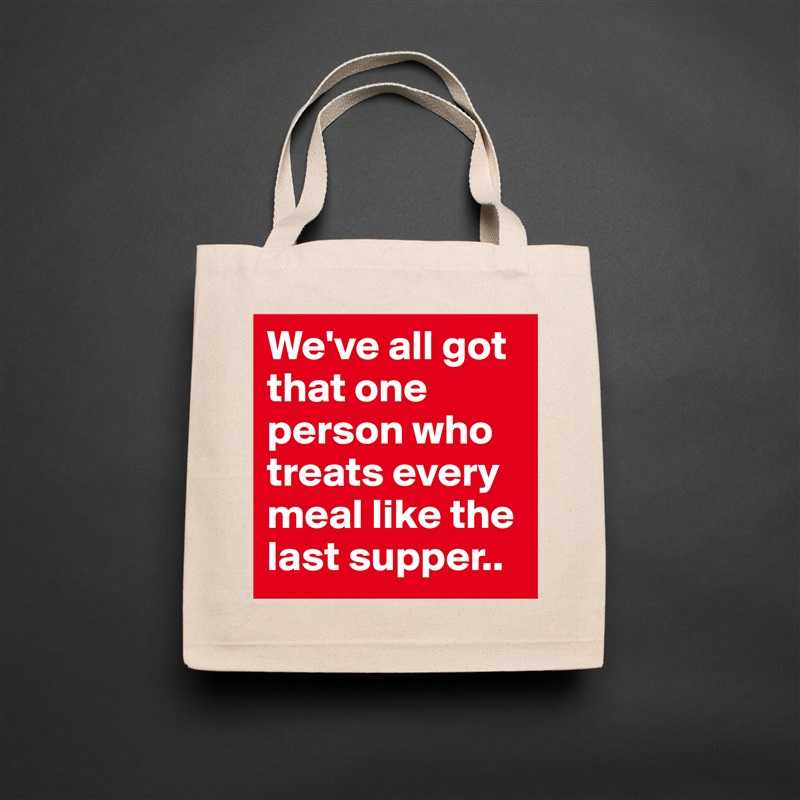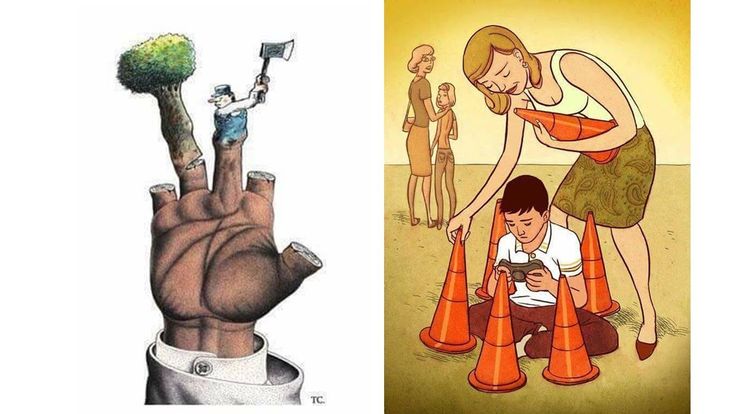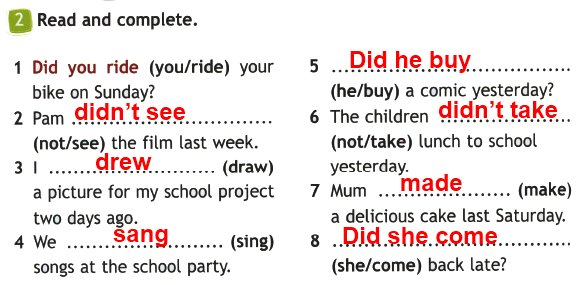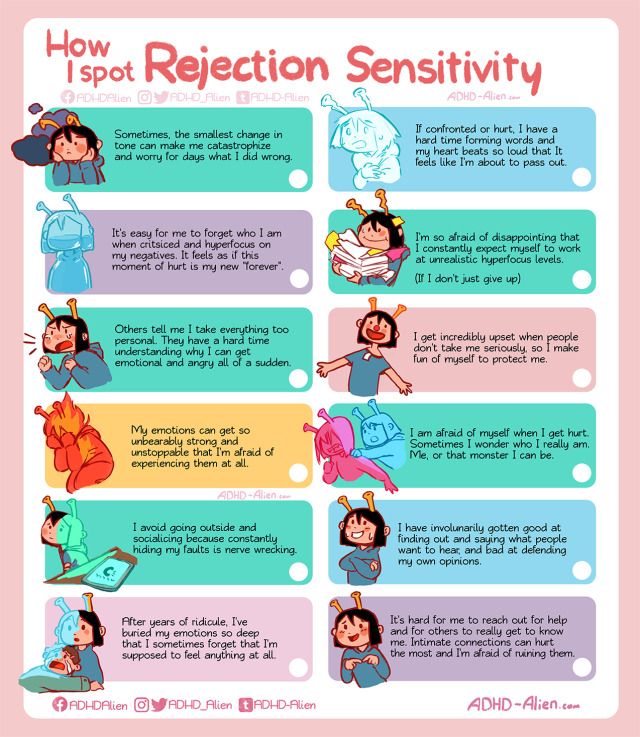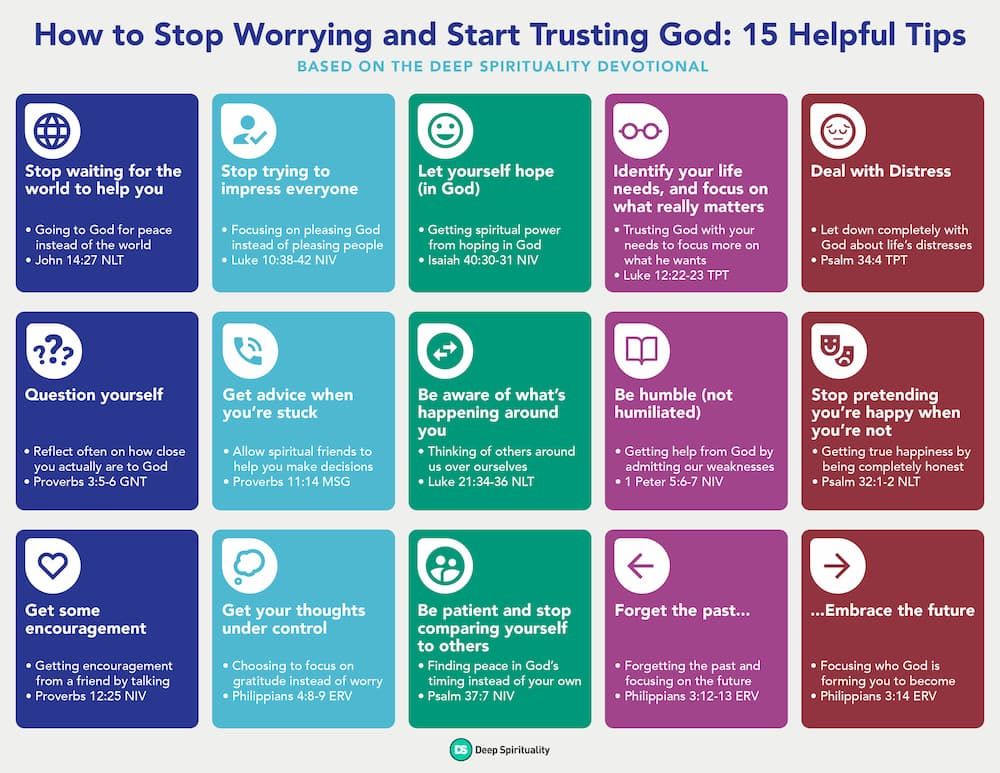Consequences for teenagers
Appropriate Consequences for a Teen’s Bad Behavior
Posted on by middleearthnj 39 comments
When a teen breaks the rules or behaves poorly, parents must step in and ensure that there is a consequence. It’s important to understand that punishment is not the goal in a parent’s discipline, but rather providing a lesson. Learning from your mistakes is often life’s best method for growing and improving.
Here are some ideas for appropriate consequences when your teen misbehaves:
Ignore Mild Misbehavior
Ignoring behavior can be a very effective consequence to minor irritations, but it’s very important to carefully choose which behaviors you will ignore. Serious or unsafe behaviors should never be ignored. Mild misbehavior is something that is irritating or annoying, but does not harm humans (including one’s self), animals, or property. These types of unwanted behaviors tend to correct themselves over time, especially if you don’t overreact to them or reinforce them with a great deal of excited attention.
Allow Natural Consequences
A natural consequence is something that automatically results from a person’s action. Natural consequences show teens the reasons for your rules, and provide a correction without the parent having to do anything, which can prevent teens from developing resentment at a parent for “punishing them.” They can experience first-hand why the rules exist and what the results are when the rules are broken. Generally, natural consequences help them learn best. The key is for parents to avoid “rescuing” their teen when a natural consequence occurs. Sometimes the consequence feels too severe to a parent and they want to step in, but that ruins the lesson. Examples of natural consequences are:
- When the teen refuses to do his homework, he faces the consequence of getting a zero or having to stay after school to get it completed. Parents don’t need to nag him to get it done because the consequence should get his attention better than nagging.
 Parents shouldn’t rescue their child by letting him stay up late or skip school to finish the assignment.
Parents shouldn’t rescue their child by letting him stay up late or skip school to finish the assignment. - If the house rule is that mom only washes clothes that are placed in the hamper, then the teenager faces the consequence of not wearing the clothing article, washing it herself, or wearing it dirty.
- If the house rule is that the teen receives an allowance on Friday, but the teen spends his entire allowance Friday night, then the consequence is that he will not have any money for the remainder of the week.
- If your heavy-footed daughter gets a speeding ticket, the consequence is that she must earn the money to pay for the ticket.
Provide Logical Consequences
Sometimes natural consequences don’t work because they aren’t a strong enough deterrent or because the natural consequence is dangerous. For example, the consequence of not wearing a seat belt could potentially be death, so a natural consequence in an area of safety is not appropriate.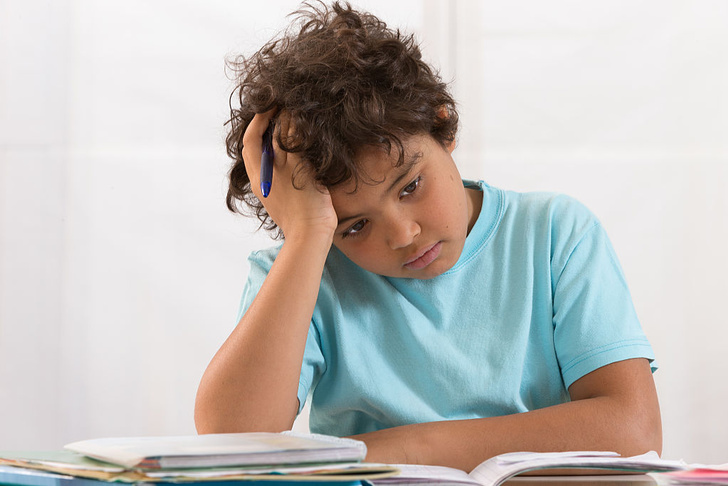 In these situations, parents will need to develop a logical consequence to promote the desired behavior. Logical consequences should be directly related to the misbehavior and should not threaten or punish the teen. In our seatbelt example, a logical consequence for getting caught without a seatbelt is losing access to the car for a week. Another example: if your teen is having difficulty getting up in the morning for school, a logical consequence would mean an earlier time for “lights out” at night.
In these situations, parents will need to develop a logical consequence to promote the desired behavior. Logical consequences should be directly related to the misbehavior and should not threaten or punish the teen. In our seatbelt example, a logical consequence for getting caught without a seatbelt is losing access to the car for a week. Another example: if your teen is having difficulty getting up in the morning for school, a logical consequence would mean an earlier time for “lights out” at night.
Assign Extra Chores
Sometimes there are not natural or logical consequences for misbehavior, but it still needs to be corrected. For example, if your son speaks disrespectfully to you, you can assign him the chore of cleaning the dinner dishes that evening in addition to his regular housework.
Opportunities for Restitution
When a teen’s actions hurt someone else or damage property, you have the perfect opportunity to allow your teen to make amends as a consequence.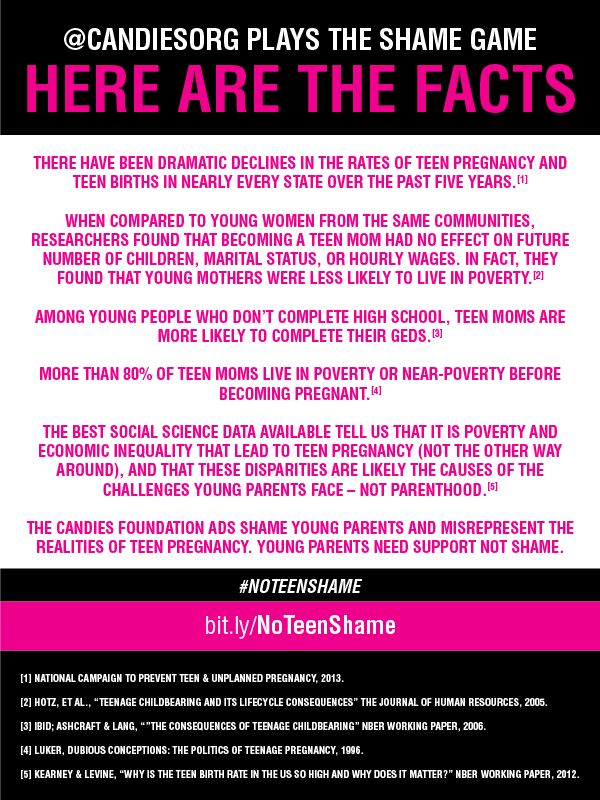 This is an excellent lesson in the making and also encourages empathy for others. Restitution gives your child a chance to try and repair some of the damage that may have been done. For example, if your teenage son vandalizes the neighbor’s fence, he should pay to repair the fence and do a few extra chores for the neighbor, or if your teenage daughter borrows her sister’s shirt without asking and then rips a hole in it, she should buy her sister a new shirt and make her bed for a week.
This is an excellent lesson in the making and also encourages empathy for others. Restitution gives your child a chance to try and repair some of the damage that may have been done. For example, if your teenage son vandalizes the neighbor’s fence, he should pay to repair the fence and do a few extra chores for the neighbor, or if your teenage daughter borrows her sister’s shirt without asking and then rips a hole in it, she should buy her sister a new shirt and make her bed for a week.
Restricting Privileges
Probably the most common form of consequences parents impose is “grounding” or restricting their privileges. There are a few guidelines for making this work:
Types of Privileges to Restrict. You must take something away from your teen that he really enjoys to make this consequence effective. It should cause your teen some discomfort to lose, but not be out of proportion to the misbehavior. For example, you shouldn’t make your child quit their favorite club or team because they missed curfew one night. Additionally, sometimes you must take away more than one item to really make an impact. For example, if you take away just the TV, your teen may end up watching TV on their computer, so there was no pain. Driving without a seatbelt might mean losing driving privileges for a week.
Additionally, sometimes you must take away more than one item to really make an impact. For example, if you take away just the TV, your teen may end up watching TV on their computer, so there was no pain. Driving without a seatbelt might mean losing driving privileges for a week.
Explain Restriction Limits. Parents need to specifically tell their teen when or how they can earn back those privileges. Sometimes it makes sense to take something away for a set amount of time, while other times it’s more appropriate to have your teen “earn” back the privileges. Parents should not be vague – like “You can have your privileges back when you start behaving” – which will lead to frustration and resentment. Let’s look at the two types of restrictions:
- Time Limited Privileges. This is when you take something away for a set amount of time. You tell them they cannot do something specific for 24 hours or a few days for a more serious or repeated offense.
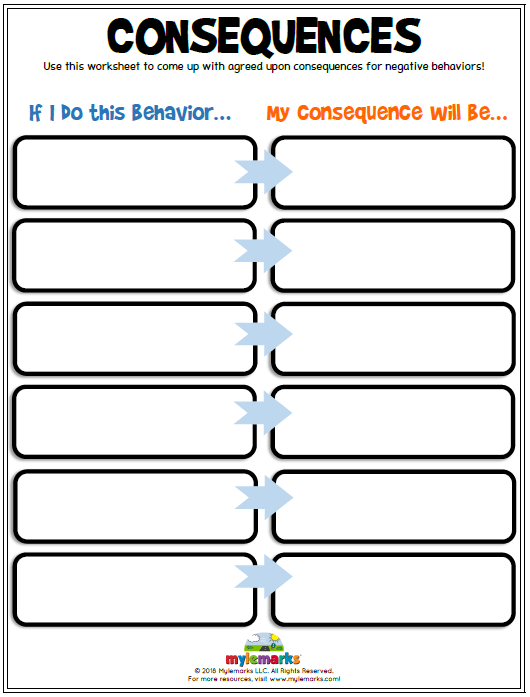 Never take something away for weeks or a month because it loses its effectiveness.
Never take something away for weeks or a month because it loses its effectiveness. - Earning Back Privileges. This is when a parent establishes a clear guideline of how their teen can regain their privileges. It’s important that your teen understand exactly what they must do to get his privileges back. A good example of this type of restriction is if your teen is late for his curfew, set his new curfew one hour earlier. Tell him he needs to behave responsibly for two weeks by being home on time and getting all of his chores done on time before he can earn back his later curfew. Then, leave it up to your teen to take responsibility for earning privileges back.
Following through with Restrictions. Restrictions only work if parents don’t give in or give up just because their teen whines or promises to behave. You must see the consequence through in order to see behavior change. If you don’t think you can actually follow through on taking his phone away for an entire day, don’t threaten to do so.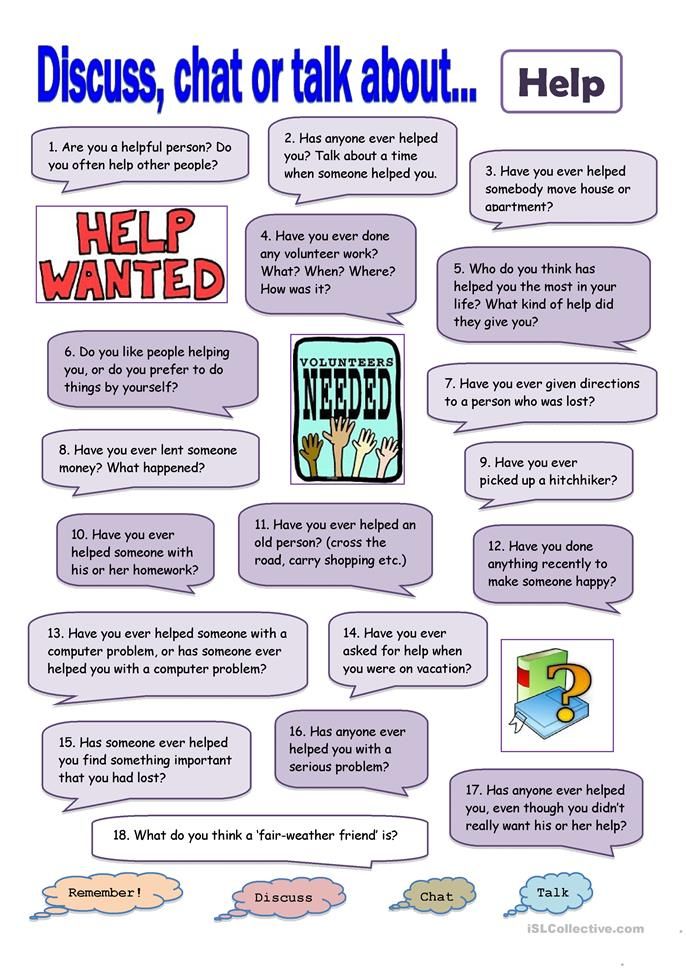 You lose all your power. Only take away those things you are willing to live without and then follow it through. By choosing good restrictions and following through on those consequences, parents will see the behavior change they want.
You lose all your power. Only take away those things you are willing to live without and then follow it through. By choosing good restrictions and following through on those consequences, parents will see the behavior change they want.
Like this:
Like Loading...
tagged with appropriate punishment for teenager, disciplining your teenager, good disclipline for teen, ideas for consequences for teen breaking the rules, natural and logical consequences for teenagers, restricting a teen's privileges
- Becoming Responsible
Effective Consequences for Teenagers | Empowering Parents
If you’re having trouble giving effective consequences to your teen, know that you are not alone. Many parents tell me that nothing seems to work and that coming up with the right thing for their child can seem like an impossible task.
If you’re the parent of an adolescent, you may have grounded your child, taken away their video games, or suspended their driving privileges for months on end.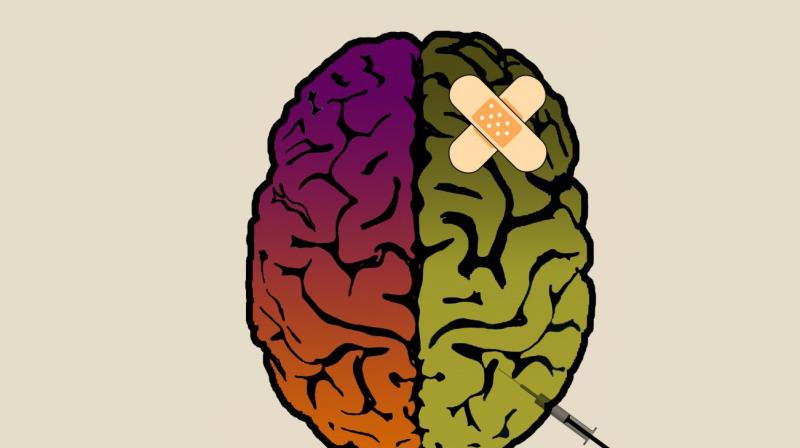 But as James Lehman says, you can’t punish kids into acceptable behavior—it just doesn’t work that way.
But as James Lehman says, you can’t punish kids into acceptable behavior—it just doesn’t work that way.
“You can’t punish kids into acceptable behavior.”
Rather, an effective consequence should encourage your child to change their behavior — whether that is abiding by the house rules or treating people respectfully. So first, you need to identify the behavior you want to change.
For example, if your child swears when they don’t get their way, you want them to behave more appropriately. Instead of grounding or punishing, or even reasoning with your child when they get angry and lash out, an effective consequence here would require your child to practice better behavior – and improve their self-control – for a period of time before their normal privileges are restored.
Let’s break this down according to The Total Transformation Program:
- Effective consequences are connected to the original behavior and are both task- and time-specific.

- “Connected to the original behavior” means that your consequence needs to be related to the behavior you want to see your child change or improve.
- “Task-specific” means that there is something your child needs to accomplish or practice related to the original problem. This is a concrete behavior, like washing the dishes, meeting curfew, or not swearing.
- “Time specific” means there is a specific amount of time in which they needs to demonstrate that behavior.
So, when your child swears, they might lose access to their electronics until they can go without swearing for two hours. The consequence is tied to the behavior. They swore, so they have to practice not swearing. This consequence is task-specific – it requires them to exercise the part of their brain that governs self-control. If they want their stuff back, they have to practice better behavior. And it’s time-specific – they need to demonstrate self-control for two hours. Only then are they free to have their privileges back.
It’s important to understand that you can’t get your child not to feel angry or frustrated. That’s just part of being human. But you can require that they change the way they deal with those feelings. You can expect them to practice some self-control. Your goal is to require that your child practice the better behavior for a certain amount of time before they get their privileges back. So practice and behavioral improvement equals the restoration of privileges.
If they yell about their consequence, or how unfair it is, you can say:
“I understand that you’re angry. Yelling is not going to get you what you want. Once you’ve been able to deal with your anger appropriately for two hours, you will get your electronics back.”
Do not continue to explain your consequences or justify your decisions. They may mumble to themselves or text their friends about how awful you are, and it may take some time, but eventually, your child will decide to practice those skills that earn back their electronics.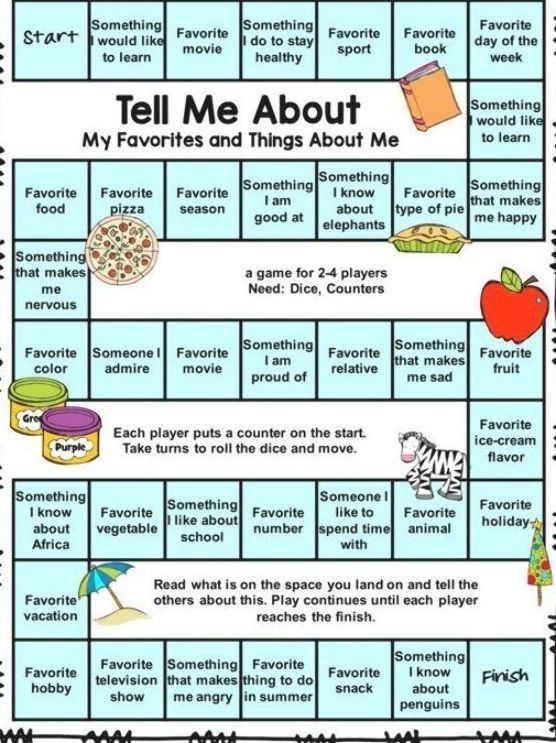
How to Choose a Consequence
Think of it this way: a privilege is a motivator. The withdrawal or granting of a privilege should give your child an incentive to follow the rules of your house, even when they don’t agree with those rules.
An effective consequence is a privilege your child is interested in. For some kids, video games are a powerful motivator, while other kids could care less about them. Taking away a cell phone for two hours works for some kids while others would just find another way to communicate.
In order to choose the right privilege to use as a consequence, you have to know your child. What are their interests? What would really impact them if they lost it for a short period of time? Some parents tell us that using the blanket term “all electronics” works better than just saying “no video games,” which can make kids turn to YouTube as a distraction.
Remember, the right privilege should be an activity that your child will actually miss. Withhold that privilege until your child completes the task you’ve set for them.
Withhold that privilege until your child completes the task you’ve set for them.
James Lehman suggests that you sit down with your child and come up with a list of privileges and consequences together. The advantage here is that you are working as a team to solve the problem. It can help you identify things or activities your child truly values. It also clarifies what the consequences will be for certain infractions—for everyone involved. Not only will your child know what will happen if they break a certain rule, but the parents don’t have to spend time coming up with something in the heat of the moment.
What If Your Child Doesn’t Seem to Care What You Use as a Consequence?
Many parents call the Empowering Parents parent coaching team, saying that their kid doesn’t seem to care what they take away. One dad said to me in exasperation,
“Even though my daughter lives to text, she acts like she could care less when her phone is taken away. Nothing works with her!”
Some kids appear not to care what activity you restrict; they pretend they didn’t want to do it anyway.
But look at it this way: would your child really want you to know that they care about the consequence you’re giving them? Would they reveal their reaction to you and let you know you got to them? That would make it seem like you have power over them, and they aren’t about to concede on that one.
So some kids, like the teenage girl above, feign indifference when you remove a privilege. If you’ve watched your child and know that what you’re taking away really does impact them, don’t worry about whether or not they seem suitably upset at the loss of it. Give the consequence time to work.
What If the Consequences Still Aren’t Working?
So what if you know you’ve chosen a valuable privilege and your consequences still aren’t working? The key here is to take a look at the length of time privileges are removed. Is it too long? Does your child lose interest in what you’ve taken away (the “out of sight, out of mind” dilemma)? Is the time frame so long that your child can’t possibly be successful (no swearing for a whole month)?
Remember, your goal is to create better behavior in your child, and the consequence/privilege needs to encourage that improvement by being time-specific. If you truly want your child to improve their behavior, you need to create an environment in which your child can succeed. The time span of your consequence is important – it should be long enough that your child has to stretch their skills and short enough that you have a good chance of seeing improvement.
If you truly want your child to improve their behavior, you need to create an environment in which your child can succeed. The time span of your consequence is important – it should be long enough that your child has to stretch their skills and short enough that you have a good chance of seeing improvement.
In summary, to be effective, a consequence needs to be short-term, task-specific, and involve a privilege your child values. Your goal here is to produce a child who can respond to limits, meet responsibilities, and demonstrate age-appropriate behavior. Your consequences and privileges help get them there.
Be Persistent and Consistent
One last word of advice: parents often want to see their child’s behavior improve overnight. If you are faced with a child who behaves inappropriately under stress, your consequences should require them to practice and get better. Don’t expect perfection immediately. Like any new skill, better behavior takes practice.
When implementing a new consequence, you can expect some failure.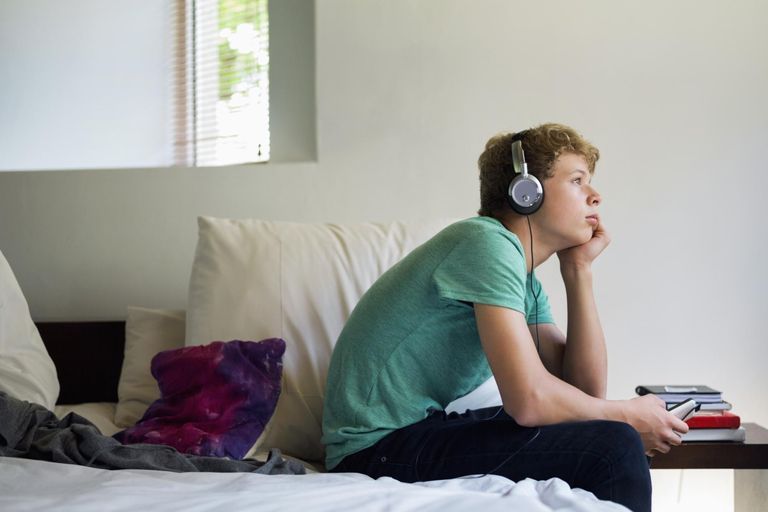 You can expect that you may need to restart a couple of times. In the beginning, you may find that your child behaves inappropriately every day and has their privileges removed often. That doesn’t mean you’ve chosen the wrong consequence. It simply means your child needs time to practice better skills. And they need you to be consistent and to keep them practicing.
You can expect that you may need to restart a couple of times. In the beginning, you may find that your child behaves inappropriately every day and has their privileges removed often. That doesn’t mean you’ve chosen the wrong consequence. It simply means your child needs time to practice better skills. And they need you to be consistent and to keep them practicing.
Empowering Parents Podcast: Apple, Spotify, Google, Stitcher
Adolescent and youth health
Adolescent and youth health- Healthcare issues »
- A
- B
- B
- G
- D
- E
- and
- 9000 O
- P
- R
- S
- T
- U
- F
- X
- C
- H
- W
- W
- B
- S
- B
- E
- S
- I
- Popular Topics
- Air pollution
- Coronavirus disease (COVID-19)
- Hepatitis
- Data and statistics »
- News bulletin
- The facts are clear
- Publications
- Find country »
- A
- B
- B
- G
- D
- E
- F
- L 9000
- R
- C
- T
- in
- x
- 9000
- WHO in countries »
- Reporting
- Regions »
- Africa
- America
- Southeast Asia
- Europe
- Eastern Mediterranean
- Western Pacific
- Media Center
- Press releases
- Statements
- Media messages
- Comments
- Reporting
- Online Q&A
- Events
- Photo reports
- case studies
- Questions and answers
- Speeches
- Update
- Emergencies "
- News "
- Disease Outbreak News
- WHO Data »
- Dashboards »
- COVID-19 Monitoring Dashboard
- Basic moments "
- About WHO »
- CEO
- About WHO
- WHO activities
- Where does WHO work?
- Governing Bodies »
- World Health Assembly
- Executive committee
- Main page/
- Media Center /
- Newsletters/
- Read more/
- Adolescent and youth health
Nik Naubauer
© Photo
Key Facts
- In 2020, over 1.
 5 million deaths occurred in adolescents and young adults aged 10–24, or nearly 5,000 deaths every day.
5 million deaths occurred in adolescents and young adults aged 10–24, or nearly 5,000 deaths every day. - Young children (10–14 years) are at the lowest risk of death among all age groups.
- The leading causes of death among adolescents and young adults are injuries (including those associated with road traffic accidents and drowning), physical abuse, self-harm and obstetric and gynecological pathologies.
- Half of all mental health disorders in adults begin to develop much earlier - before the age of 14, but at this age in most cases they are not detected and not treated.
- Early initiation of substance use is associated with an increased risk of addiction and other problems later in life; compared to older adults, young people are disproportionately affected by substance use problems.

- Globally, 43 out of 1,000 girls aged 15 to 19 become mothers.
Who is most at risk of dying?
Survival chances for adolescents and young adults vary greatly around the world. In 2020, the 10-24 age group was most likely to die in sub-Saharan Africa, Oceania (excluding Australia and New Zealand), North Africa and South Asia (1). On average, a 10-year-old child is six times more likely to die before age 24 in sub-Saharan Africa than in North America and Europe.
Major health problems
Injuries
Unintentional injuries are the leading cause of death and disability among adolescents. In 2019, nearly 1,000,000 adolescents (10–19 years old) died in road traffic crashes (2). Many of the dead were classified as “vulnerable road users”, i.e. pedestrians, cyclists or drivers of two-wheeled motor vehicles. In many countries, road safety laws need to be more comprehensive and enforcement needs to be strengthened. In addition, young drivers should be instructed in safe driving techniques, and legal prohibitions on driving under the influence of alcohol and drugs should be strictly observed by representatives of all age groups. The blood alcohol limit for young drivers should be set at a lower level than for adults. Novice drivers are encouraged to issue driver's licenses with a trial period, during which there is zero tolerance for drunk driving.
In addition, young drivers should be instructed in safe driving techniques, and legal prohibitions on driving under the influence of alcohol and drugs should be strictly observed by representatives of all age groups. The blood alcohol limit for young drivers should be set at a lower level than for adults. Novice drivers are encouraged to issue driver's licenses with a trial period, during which there is zero tolerance for drunk driving.
Drowning is also one of the leading causes of death among adolescents, with over 30,000 adolescents estimated to drown in 2019, more than three-quarters of them boys. The most important measure to prevent this type of mortality is teaching children and adolescents to swim.
Violence
Interpersonal violence is the fourth leading cause of death for adolescents and young adults worldwide. This figure varies considerably by region. In low- and middle-income countries in the Region of the Americas, interpersonal violence is responsible for approximately one third of all adolescent male deaths. According to the Global School Health Survey, 42% of adolescent boys and 37% of adolescent girls have experienced bullying. Sexual violence also affects a significant proportion of young people, with one in eight young people reporting having been sexually assaulted.
According to the Global School Health Survey, 42% of adolescent boys and 37% of adolescent girls have experienced bullying. Sexual violence also affects a significant proportion of young people, with one in eight young people reporting having been sexually assaulted.
In addition, violence during adolescence increases the risk of injury, HIV and other sexually transmitted infections, mental health problems, poor school performance and attendance, premature pregnancy, reproductive health problems, and the risk of infectious diseases. and noncommunicable diseases.
Effective approaches to violence prevention and response include interventions to educate parents and create an enabling environment for early childhood development, prevent bullying in schools, develop life and social skills for children, and approaches to limit access to alcohol and firearms based on interaction with local communities. Effective and attentive care and assistance to adolescent survivors of violence and ongoing support help overcome the physical and psychological consequences.
Mental health
Depression is one of the leading causes of illness and disability among adolescents, and suicide is the third leading cause of death in the 15 to 19 age group (2). Sixteen percent of the total burden of disease and injury in adolescents and young people aged 10–19 years is due to mental health disorders. Half of all mental health disorders in adults begin to develop much earlier - before the age of 14, but at this age in most cases they are not detected and not treated.
Adolescents' well-being and mental health are influenced by many factors. Violence, poverty, stigmatization, marginalization, living in a humanitarian disaster or insecurity can increase the risk of mental health problems. The consequences of inaction on adolescent mental health problems are felt into adulthood, damaging both physical and mental health and limiting adults' ability to live fulfilling lives.
Developing social-emotional skills in children and adolescents and providing them with psychosocial support in schools and other settings contributes to their mental health. In addition, programs that help strengthen ties between adolescents and their families, as well as improve the quality of living conditions, are of great importance. When problems arise, they should be identified and dealt with in a timely manner by competent and attentive health professionals.
In addition, programs that help strengthen ties between adolescents and their families, as well as improve the quality of living conditions, are of great importance. When problems arise, they should be identified and dealt with in a timely manner by competent and attentive health professionals.
Adolescent mental health. Fact sheet
Alcohol and drug use
Adolescent alcohol use is a major concern in many countries. Alcohol leads to decreased self-control and increases the risk of dangerous behaviors such as unsafe sex and dangerous driving. It is also one of the root causes of injuries (including road traffic injuries), violence and premature death. Drinking alcohol can also lead to health problems later in life and has a negative impact on life expectancy. More than a quarter of all people aged 15-19 now drink alcoholyears worldwide, i.e. 155 million teenagers. In 2016, the prevalence of heavy episodic drinking among adolescents aged 15–19 years was 13.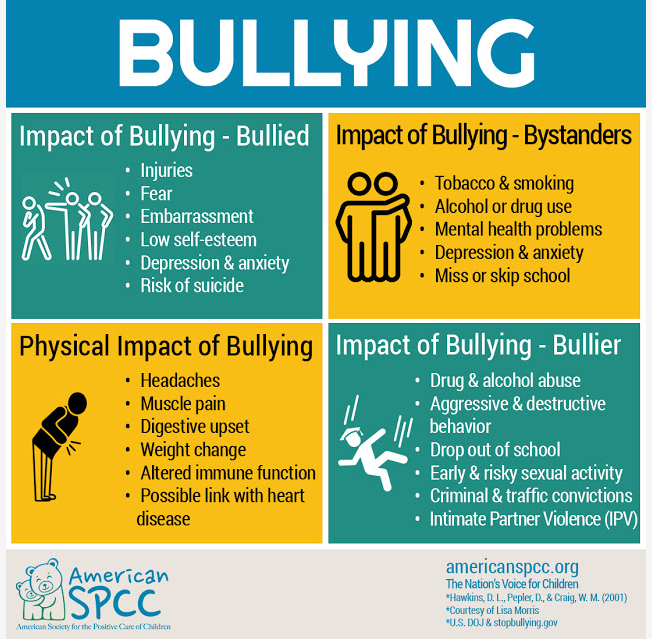 6%, with male adolescents most at risk.
6%, with male adolescents most at risk.
Marijuana is the most widely used psychoactive substance among young people, with approximately 4.7% of 15-16 year olds using marijuana at least once in 2018. Alcohol and drug use in children and adolescents causes neurocognitive changes that can lead to behavioral, emotional, social and learning problems later in life.
Prevention of alcohol and drug use is an important area of public health action and can include strategies and interventions at the population level, as well as at the school, community, family and individual levels. Setting a minimum age for the purchase and consumption of alcohol and banning marketing and advertising of alcoholic beverages directed at children are among the key strategies to reduce alcohol consumption among adolescents.
Tobacco use
The vast majority of current tobacco users started doing so during adolescence. Measures such as banning the sale of tobacco products to minors (under 18 years of age) and raising the price of tobacco products through higher taxes, banning tobacco advertising and creating a smoke-free environment are essential.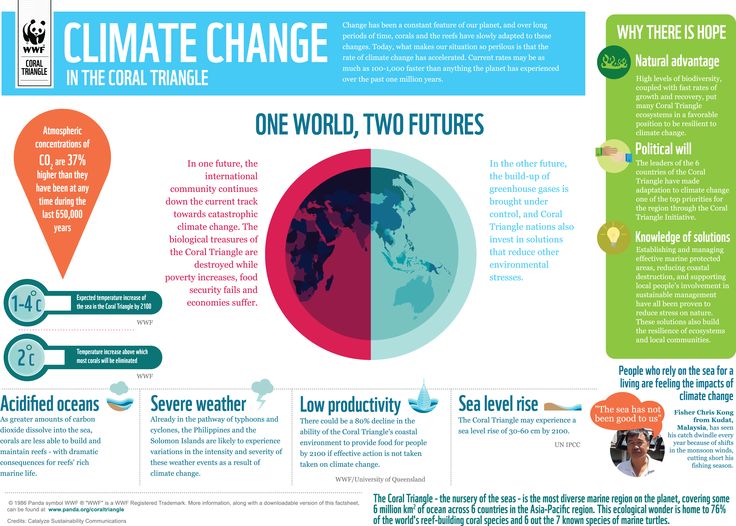 Globally, at least one in 10 adolescents aged 13 to 15 use tobacco, although rates are much higher in some regions.
Globally, at least one in 10 adolescents aged 13 to 15 use tobacco, although rates are much higher in some regions.
HIV/AIDS
An estimated 1.7 million adolescents (aged 10–19 years) were living with HIV in 2019, and about 90% of them lived in the WHO African Region (3 ). Despite a significant decline in new HIV infections among adolescents since the peaks in 1994, about 10% of new HIV infections among adults still occur among adolescents, three-quarters of them girls (3). In addition, while new infections appear to have fallen in many of the most heavily affected countries, recent testing coverage remains low, suggesting that many adolescents and young people living with HIV are not know about their HIV status (5).
Adolescents living with HIV have more limited access to antiretroviral therapy, less adherence to treatment, more difficulty in maintaining follow-up and viral suppression. One key contributing factor to this state of affairs is the low level of adolescent-friendly services, including psychosocial interventions and support.
Adolescents and young adults need to be provided with information about HIV prevention and access to appropriate resources. This includes access to HIV prevention interventions, including voluntary medical male circumcision, condoms and pre-exposure prophylaxis, increased access to HIV testing and counseling, and the possibility of closer contact. with HIV treatment services for HIV-positive adolescents.
Other communicable diseases
The number of measles-related deaths and disabilities among adolescents has been significantly reduced due to increased vaccination of children: teenage mortality has been reduced by 90%.
Diarrhea and lower respiratory tract infections (eg pneumonia) are estimated to be among the top 10 causes of death in adolescents aged 10–14 years. These two disease groups, along with meningitis, are among the top five causes of death for adolescents in low- and middle-income countries in Africa.
An infection such as human papillomavirus usually occurs after the onset of sexual activity and can lead not only to short-term consequences (genital warts) during adolescence, but more dangerously, to cervical cancer and other cancers that manifest in a few decades. The optimal age for HPV vaccination is in the early teens (9–14 years) and it is estimated that if 90% of the world's girls were vaccinated against HPV, more than 40 million lives could be saved in the next hundred years. However, it is estimated that in 2019Only 15% of girls worldwide received this vaccine.
Human papillomavirus (HPV) and cervical cancer. Fact sheet
Premature pregnancy and childbearing
In developing countries, approximately 12 million girls aged 15–19 and at least 777,000 girls under 15 years of age have children every year. Complications during pregnancy and childbirth are one of the leading causes of death among girls aged 15–19years all over the world.
According to the United Nations Population Division, the global adolescent birth rate was 41 births per 1,000 adolescent girls in 2020, with rates ranging from 1 to 200 births per 1,000 girls by country (5). This indicates a significant decline in adolescent births since 1990. In parallel with this decline, the maternal mortality rate among girls aged 15 to 19 has also declined.
One of the targets of the health-related Sustainable Development Goal (SDG 3) is to achieve, by 2030, global universal access to sexual and reproductive health services, including family planning services, information and education and integration of reproductive health issues into national strategies and programs.
Adolescents have the right to the comprehensive sexuality education they need, which is a formalized educational process of learning and understanding the cognitive, emotional, physical and social aspects of sexuality. Improving access to contraceptive information and services can reduce the number of preterm pregnancies and childbirth at too young a age among girls. Enacting and enforcing legislation that sets the minimum age for marriage at 18 can help.
Adolescent girls should be provided with quality prenatal care when they become pregnant. Where permitted by applicable law, adolescents who choose to terminate a pregnancy should have access to safe abortion services.
Teenage pregnancy. Fact sheet
Nutrition and micronutrient deficiencies
In 2016, iron deficiency anemia was the second leading cause of life lost among adolescents due to death and disability. In addition, iron and folic acid supplements help promote the health of adolescents who will eventually become parents. In areas where intestinal worms such as hookworms are common, regular deworming is recommended to prevent micronutrient deficiencies (including iron).
Establishing healthy eating behaviors in adolescents is the basis for good health in adulthood. Fighting the promotion of foods high in saturated fats, trans-fatty acids, free sugars and salt, and increasing access to healthier foods and opportunities for physical activity are important for all age groups, but especially for children and adolescents.
Undernutrition and obesity
Many boys and girls in developing countries enter adolescence chronically malnourished, making them more vulnerable to disease and the risk of premature death. In parallel, there is a growing number of overweight or obese adolescents in both low- and middle-income and high-income countries.
In 2016, around one in six adolescents aged 10–19 years worldwide was overweight. The prevalence of overweight in different WHO regions ranges from less than 10% in the South-East Asia Region to more than 30% in the Region of the Americas.
Physical activity
Physical activity provides fundamental health benefits to adolescents, including improved respiratory, cardiovascular, muscular and skeletal health, maintaining a healthy body weight, and enhancing psychosocial well-being. WHO recommends that adolescents get an average of at least 60 minutes of moderate-to-vigorous physical activity each week through play, sports, and active forms of transportation (such as cycling and walking) or exercise.
Globally, it is estimated that only one in five adolescents can follow these recommendations. The prevalence of physical inactivity is high in all WHO regions, with a higher prevalence among adolescent girls than among boys.
In order to increase the level of physical activity in the country, society at large and local communities must create safe and supportive environments and opportunities for all adolescents to engage in physical activity.
Rights of adolescents
International legal documents enshrine the rights of children (under 18 years of age) to survival, growth and development. In 2013, the Committee on the Rights of the Child (CRC), which monitors the implementation of the Convention on the Rights of the Child, published guidelines on the right of children and adolescents to the enjoyment of the highest attainable standard of health, and in 2016 a general comment on the implementation of rights of children in adolescence. It emphasizes the duty of states to recognize the special needs and rights of adolescents and young people in relation to health and development.
The Convention on the Elimination of Discrimination against Women also establishes the rights of women and girls to health and appropriate health care.
WHO action
In May 2017, WHO released a major report, Global Accelerated Action for Adolescent Health (AA-HA!): A guide to facilitate country implementation. This guide has been developed following extensive consultations with Member States, agencies of the United Nations system, adolescents and young people, civil society representatives and other partners. Its purpose is to assist national governments in identifying and planning actions to meet the health needs of adolescents. This reference document is intended for policy makers and program managers at the national level in planning, implementing, monitoring and evaluating adolescent health programmes. A total of 68 countries have been trained in the use of this guide for national priority setting, programming, monitoring and evaluation, and many countries are now applying the guide's methodology to update national strategies and policies.
To improve global adolescent health assessments, WHO, in collaboration with UNAIDS, UNESCO, UNFPA, UNICEF, UN Women, the World Bank Group and the World Food Program (WFP), established the Global Action Advisory Group on Adolescent Health Assessments ( GAMA - Global Action for Measurement of Adolescent health (GAMA) Advisory Group). It provides technical advice to WHO and its United Nations partners on a core set of adolescent health indicators to harmonize efforts in adolescent health assessment and reporting.
In general, WHO performs a range of tasks in the area of youth health, including:
- development of evidence-based guidelines to support health services and other sectors;
- develop guidelines for governments on adolescent health and adolescent health systems, including providing adolescents with high-quality, age-appropriate health care services;
- documenting progress in improving the health and development of adolescents;
- raise awareness among the general public and other stakeholders about the health of young people;
- advocacy with governments and collaboration with youth organizations and service providers to help build structures and processes at the national level to institutionalize adolescent participation in dialogues related to relevant areas of public policy, funding and program delivery.
References
(1) United Nations Inter-Agency Group for Child Mortality Estimation (UN IGME). Levels and Trends in Child Mortality: Report 2021. https://childmortality.org/wp-content/uploads/2021/12/UNICEF-2021-Child-Mortality-Report.pdf
(2) Liu L, Villavicencio F, Yeung D et al. National, regional, and global causes of mortality in 5-19-year-olds from 2000 to 2019: a systematic analysis. Lancet Glob Health 2022;10:e337-47.
(3) UNAIDS, https://aidsinfo.unaids.org/
(4) UNICEF, 2020. https://data.unicef.org/topic/hivaids/adolescents-young-people/#:~:text=HIV%20in%20adolescents,of%20new%20adult%20HIV%20infections .
(5) Consolidated guidelines on the use of antiretrovirals for the treatment and prevention of HIV infection: recommendations from a public health perspective - 2nd edition. World Health Organization; 2016.
(6) United Nations, Department of Economic and Social Affairs, Population Division. World population prospects: fertility data 2020-2025. 2020. https://population.un.org/wpp/Download/Standard/Fertility/.
Adolescent health
Drug addiction among adolescents / Children's City Polyclinic No. 58
- Main
- Information for the public
- Health schools
- Drug addiction among adolescents
In Russia, the problem of drug use by adolescents today has acquired terrifying proportions. Five years ago, a 16-year-old drug addict was a clinical rarity, but now teenagers make up a third of drug addicts who seek medical help.
Peculiarities of teenage drug addiction
The most terrible thing is that the use of drugs by today's youth has become commonplace, one might even say, a tradition. It seems that today's teenagers consider not using drugs to be indecent and not modern. Teenage drug addiction, according to statistics, has become a real epidemic in the country. Data from the Ministry of Internal Affairs of Russia show that 70% of drug users are teenagers and young people. 56% of boys and 20% of girls have taken narcotic or toxic substances at least once, and 45% of boys and 18% of girls continue to use them!
Many schoolchildren have a drug treatment manual at home and have personal experience with drug use. And these are teenagers not from an ordinary high school, but the future intellectual elite of the country...
Drugs today are sold quite openly, and even distributed via the Internet. And medicines containing narcotic substances can be bought in pharmacies without a prescription.
Causes of drug addiction among teenagers
Why is drug addiction among teenagers so common today? First of all, because the teenager has not yet formed as a full-fledged personality, he is emotionally weak and overly curious. In addition, a teenager wants to quickly become an adult, be different from his other peers and solve problems in the easiest way. But, due to their immaturity, the grown-up child does not understand that addiction does not help solve ordinary life problems, but leads to new, more serious ones. Such a manifestation of “adulthood”, like drug addiction, becomes fatal for a young person.
A teenager usually takes the first dose of the drug in the company of friends, at a disco, in a club, and even at school. And he does this solely out of curiosity, having heard enough about the drug "high". But the young man cannot understand that this euphoria is fleeting, and drug addicts use drugs for exactly the opposite purposes - not for the sake of momentary pleasure, but to return to a state that is normal for a healthy person.
In many cases, drug addiction in adolescence begins due to personal problems, such as a lack of joy in life. If a teenager does not find anything good in his life, he is not satisfied with everything that surrounds him, he decides to try a deadly potion as a life-saving remedy. Seeing drugs as a way to the world of pleasure and a joyful life, he does not understand that it is very difficult, and sometimes even impossible, to get out of this illusion.
Experts say that drug addiction in children and adolescents has the most dangerous cause - pleasure. Having tried an insidious drug for the first time, a teenager experiences unusually pleasant sensations, which he seeks to get more and more. As a result of repeated use of a narcotic substance, dependence appears, and not only physical, "breaking" in the absence of a dose, but also mental - dependence on the pleasure brought by the drug.
Often the reason for the development of drug addiction in a teenager is his friendship with peers who have experience of "drug" life. It seems to a teenager who has difficulties in communicating with his relatives that his drug addict friends understand them perfectly, and together with drugs they can replace his family and school.
The specificity of teenage drug addiction is that the cause of its development can be a completely opposite situation. A teenager communicates with a very prosperous group of friends, but strives to be a leader in it. To do this, he begins to demonstrate to his peers his various abilities, among which are smoking, drinking and drug use as signs of "adulthood".
Stages of adolescent drug addiction
There are four stages in the development of adolescent drug addiction.
First stage - the first dose (or several doses) of the drug. A teenager uses a narcotic drug “for company”, provoked by more experienced peers or older children. Dependence does not arise, euphoria at this stage of teenage drug addiction is poorly expressed. Often, the unpleasant physiological effects that are characteristic of the first use of psychoactive substances predominate. The main significance of the first stage is the elimination of the psychological barrier, the disappearance of the internal prohibition on taking drugs. At this stage of teenage drug addiction, many patients develop an idea of the safety of the drug.
The second stage is the onset of euphoria. The teenager begins to feel euphoric in the state of intoxication and begins to view the use of the drug as a way to quickly and effortlessly get pleasure. There is no drug dependence at this stage of teenage drug addiction, continued use is due to pleasant sensations and the need to be part of a group, to share its interests.
The third stage of adolescent drug addiction is the development of mental dependence. With too long a break between doses, the teenager feels irritability, anxiety and restlessness. Now the reason for further use is not only euphoria, but also the need to eliminate unpleasant sensations.
The fourth stage of adolescent drug addiction is the onset of physical dependence. With the abolition of a narcotic drug, very unpleasant, sometimes painful vegetative and somatic symptoms (withdrawal) occur. The manifestations of the withdrawal syndrome depend on the nature of the used psychoactive substance.
Signs of drug addiction in adolescents
The first signs of drug addiction among adolescents can appear from the age of 6-7. If parents discover that a child at this age is smoking, this is cause for serious concern. Smoking at such a young age suggests that the child has a tendency to drug addiction. Therefore, parents should not hesitate, but immediately contact a psychologist until the family is in real trouble.
drug addiction may appear even after a single drug administration - this is terrible of drug addiction. The first signs that a teenager is using drugs appear already a week after they start taking them. Problems with studies, conflicts with teachers, parents and peers, late arrivals home, absenteeism of school lessons speak of the fact that the destructive mechanism has been put into action. A teenager is often absent from home, he has new, dubious acquaintances with whom he secretly talks.
The addict's behavior also changes. The teenager becomes irritable, rude, his mood often changes for no reason, he strives for solitude. There are disturbances in sleep and appetite.
There are also physical signs that indicate that a teenager is addicted to drugs:
- constricted or dilated pupils, regardless of lighting;
- slow and slurred speech;
- violation of coordination of movements;
- very pale skin;
- poor memory and depression.
All these changes in the condition and behavior of a teenager should alert his parents.
Consequences of adolescent drug addiction
Drugs have an extremely negative effect on the adolescent's immature reproductive system. Every third girl who takes heroin stops menstruating, in the remaining cases, as a rule, menstrual irregularities are observed. With adolescent drug addiction, both girls and boys experience pathological changes that lead to infertility and increase the risk of fetal deformities. Due to disorders of protein metabolism, normal muscle growth is disrupted. As a result of intoxication, liver damage and neurological disorders occur. The psyche, volitional and emotional sphere suffers. Teenage drug addiction entails an increase in criminal activity. To raise money to buy drugs, teenagers may start stealing, robbing, prostituting, or becoming small-time dealers who distribute psychoactive substances among their peers. The promiscuous choice of sexual partners characteristic of teenage drug addiction turns into unwanted pregnancies, the spread of syphilis, HIV, gonorrhea and other sexually transmitted infections. The risk of developing syphilis, HIV and hepatitis B is further increased by injecting.
Prevention of drug addiction among adolescents
Smoking, alcoholism, drug addiction in the modern world are too young. There is no guarantee that just yesterday a modest and polite child from a prosperous family will not turn into a drug addict or alcoholic. But you should try to avoid this problem.
What should be done so that a teenager does not sink to the bottom, turning into a drug addict unnecessary to society, and does not exchange life's joys for the illusion of drug "magic"?
“First of all, the prevention of drug addiction in adolescents, like other bad habits, comes down to the personal example of his parents. What a child sees from an early age, he considers the norm of life. How parents relate to smoking, alcohol, what kind of people come to visit, how communication and celebration of holidays take place - all this is deposited in the mind of the child and forms a certain model of behavior in him.
Drugs and alcohol are seen by many teenagers as a way to relax and escape from stressful reality. But the task of parents is to counter such pernicious relaxation with other ways of solving problems, and to explain to a teenager that leaving for an illusory world is an instant pleasure, and it is not worth a ruined young life.
The influence of teachers and the media is of great importance in the prevention of teenage drug addiction. Young people should understand that drug addiction among teenagers is the way to the extinction of mankind. And it is better to prevent such a problem than to try to get rid of it later.
If you want to keep your child safe from drugs, build your relationship on trust and sincerity. Talk to your teenager about serious topics about health and life without bad habits.

